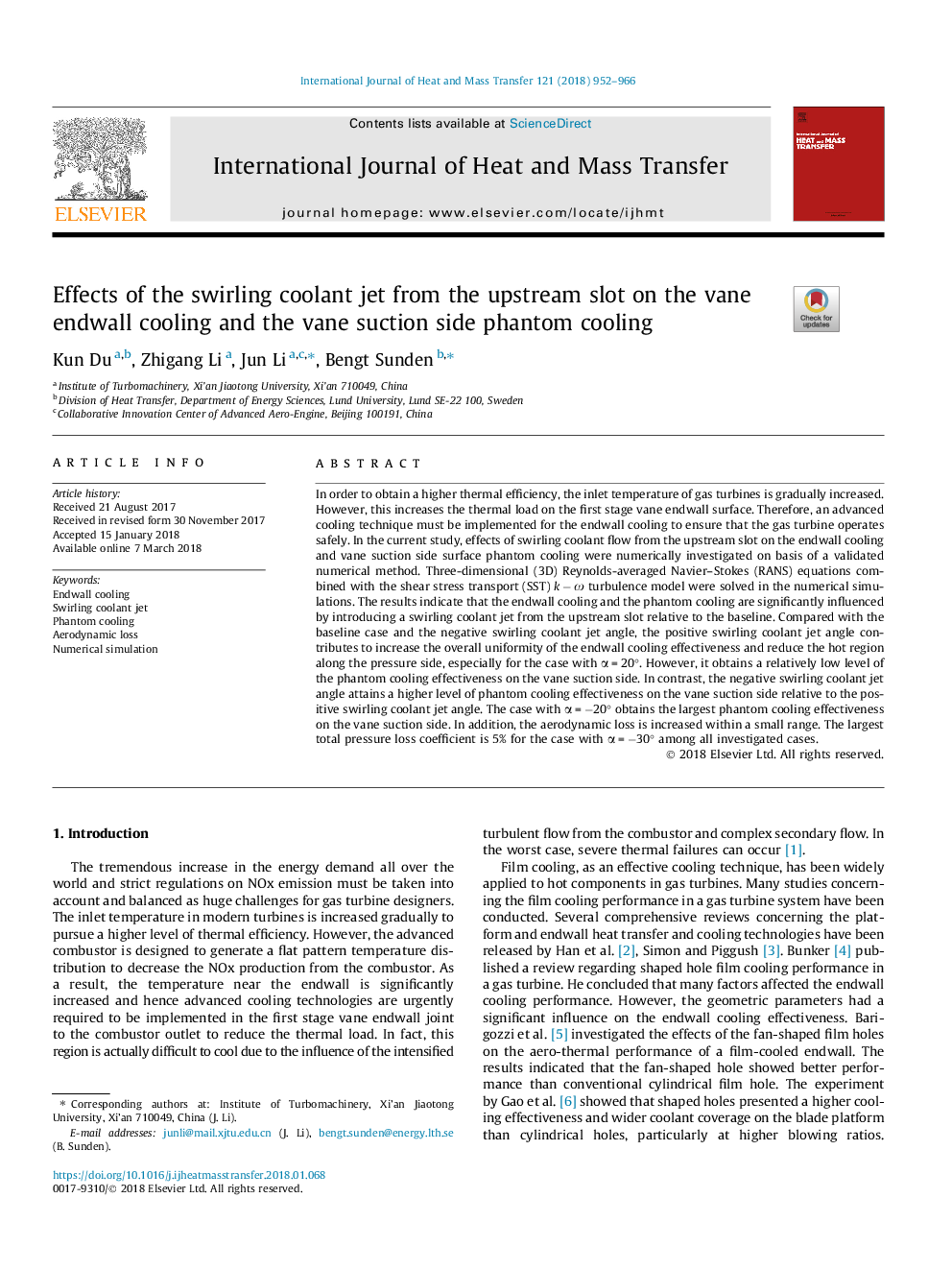| کد مقاله | کد نشریه | سال انتشار | مقاله انگلیسی | نسخه تمام متن |
|---|---|---|---|---|
| 7054547 | 1458019 | 2018 | 15 صفحه PDF | دانلود رایگان |
عنوان انگلیسی مقاله ISI
Effects of the swirling coolant jet from the upstream slot on the vane endwall cooling and the vane suction side phantom cooling
ترجمه فارسی عنوان
اثر جت خنک کننده چرخش از شکاف بالادست بر روی خنک کننده درب وانیل و طرف خنک کننده فانتوم جانبی
دانلود مقاله + سفارش ترجمه
دانلود مقاله ISI انگلیسی
رایگان برای ایرانیان
موضوعات مرتبط
مهندسی و علوم پایه
مهندسی شیمی
جریان سیال و فرایندهای انتقال
چکیده انگلیسی
In order to obtain a higher thermal efficiency, the inlet temperature of gas turbines is gradually increased. However, this increases the thermal load on the first stage vane endwall surface. Therefore, an advanced cooling technique must be implemented for the endwall cooling to ensure that the gas turbine operates safely. In the current study, effects of swirling coolant flow from the upstream slot on the endwall cooling and vane suction side surface phantom cooling were numerically investigated on basis of a validated numerical method. Three-dimensional (3D) Reynolds-averaged Navier-Stokes (RANS) equations combined with the shear stress transport (SST) k-Ï turbulence model were solved in the numerical simulations. The results indicate that the endwall cooling and the phantom cooling are significantly influenced by introducing a swirling coolant jet from the upstream slot relative to the baseline. Compared with the baseline case and the negative swirling coolant jet angle, the positive swirling coolant jet angle contributes to increase the overall uniformity of the endwall cooling effectiveness and reduce the hot region along the pressure side, especially for the case with αâ¯=â¯20°. However, it obtains a relatively low level of the phantom cooling effectiveness on the vane suction side. In contrast, the negative swirling coolant jet angle attains a higher level of phantom cooling effectiveness on the vane suction side relative to the positive swirling coolant jet angle. The case with αâ¯=â¯â20° obtains the largest phantom cooling effectiveness on the vane suction side. In addition, the aerodynamic loss is increased within a small range. The largest total pressure loss coefficient is 5% for the case with αâ¯=â¯â30° among all investigated cases.
ناشر
Database: Elsevier - ScienceDirect (ساینس دایرکت)
Journal: International Journal of Heat and Mass Transfer - Volume 121, June 2018, Pages 952-966
Journal: International Journal of Heat and Mass Transfer - Volume 121, June 2018, Pages 952-966
نویسندگان
Kun Du, Zhigang Li, Jun Li, Bengt Sunden,
